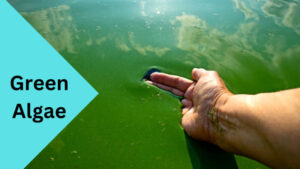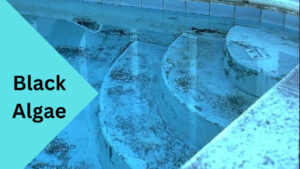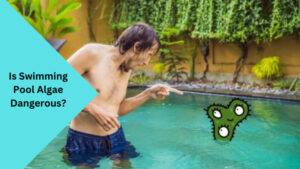Imagine a hot summer day, the sun is shining, and you can’t wait to jump into your backyard swimming pool for a refreshing dip. But as you approach the pool, you notice a greenish tint on the walls and a slimy layer on the water’s surface. That’s right, it’s swimming pool algae. But is swimming pool algae dangerous? Can it harm you and your loved ones? In this blog post, we will delve into the topic of swimming pool algae and its potential risks. We will explore different types of pool algae, discuss the safety implications, and provide insights on how to effectively manage and prevent its growth. Let’s dive in!
Understanding Different Types of Pool Algae
Before we dive deeper into the potential dangers of swimming pool algae, it’s important to understand the different types that can thrive in your pool. There are primarily three types of pool algae: green algae, yellow/mustard algae, and black algae. Each type has distinctive characteristics and poses varying levels of risk.
Green Algae

Green algae, as the name suggests, is the most common type found in pools. It can turn your pool water green and create a slimy coating on the walls and floor. While green algae may not be directly harmful to your health, it can create an unsafe swimming environment and lead to the growth of other harmful bacteria.
Yellow/Mustard Algae
Yellow or mustard algae is a stubborn type of algae that often appears as yellow or mustard-colored patches on the walls or floor of the pool. Unlike green algae, yellow algae can be challenging to get rid of and may require specific treatments. While it’s not typically harmful, prolonged exposure to yellow algae can cause irritation and discomfort.
Black Algae

Black algae is the most concerning type of pool algae. It forms dark patches or spots on the pool’s surface, primarily in areas with poor circulation or rough surfaces. Black algae can be difficult to eradicate, as it can establish deep roots in the pool’s walls. In some cases, black algae can cause respiratory issues and skin problems, making it a more significant concern compared to other types of algae.
Is Algae in the Pool Harmful?
The presence of algae in your pool is indeed a cause for concern. While not all types of algae are directly harmful to your health, they can create an environment that promotes the growth of harmful bacteria. Algae act as a breeding ground for microorganisms, such as bacteria and fungi, which can lead to various health issues if left unaddressed. Additionally, the slimy surface created by algae can increase the risk of slips and falls, posing a danger to both children and adults.also you should know about Mustard Algae: Causes, Prevention, and Effective Treatment
Will Swimming in a Pool with Algae Hurt You?
Swimming in a pool with algae can potentially hurt you and your loved ones. As mentioned earlier, algae serve as a breeding ground for harmful microorganisms. These microorganisms can cause various health problems, including skin infections, eye irritations, respiratory issues, and gastrointestinal illnesses. The risk increases if someone accidentally ingests the contaminated water while swimming. It’s vital to take immediate action and avoid swimming in a pool with visible algae growth to prevent these health risks.
Is it OK to Swim in a Pool with Algae?
Swimming in a pool with algae is not recommended. While some individuals may choose to swim despite the presence of algae, it is crucial to prioritize the safety and well-being of all pool users. Algae growth indicates poor water quality and an imbalance in the pool’s chemical levels. To ensure a safe and enjoyable swimming experience, it is essential to address the algae issue promptly and maintain proper pool maintenance and hygiene.
The Side Effects of Pool Algae
The side effects of pool algae can range from mild to severe, depending on the type of algae and an individual’s susceptibility to infections. Here are some common side effects associated with pool algae:
- Skin Irritation: Contact with algae-infested water can cause skin rashes, itching, and irritation. The slimy texture of the algae can aggravate skin problems, especially for those with sensitive skin.
- Eye Irritation: Algae and the microorganisms they harbor can cause eye irritations, redness, itching, and even conjunctivitis (commonly known as pink eye).
- Respiratory Issues: Breathing in airborne particles from algae can irritate the respiratory system, leading to symptoms such as coughing, wheezing, and difficulty breathing.
- Gastrointestinal Problems: Swallowing water contaminated with algae can result in stomach cramps, nausea, vomiting, and diarrhea.
- Allergic Reactions: Some individuals may have allergic reactions to specific types of algae, leading to allergic rhinitis, asthma attacks, or other allergic symptoms.
It’s crucial to seek medical attention if any of these side effects persist or worsen after swimming in a pool with algae.
How to Kill Algae in a Swimming Pool
Now that we understand the potential risks associated with swimming pool algae, let’s explore effective ways to get rid of it and prevent its recurrence. It’s important to note that prevention is key when it comes to pool algae. Regular pool maintenance and proper water chemistry balance can significantly reduce the chances of algae growth. However, if you’re already dealing with algae in your pool, here are some steps you can take to eliminate it:before go ahead you should know about Chlorine vs Baquacil: Which Pool Sanitizer Is Right for You?
- Brushing and Vacuuming: Start by brushing the affected areas to break the algae’s protective coating and expose it to treatment. Vacuum the pool thoroughly to remove the dislodged algae and ensure it doesn’t settle elsewhere.
- Shock Treatment: Shocking the pool with a high dose of chlorine or a non-chlorine shock treatment is an effective way to kill algae. Follow the manufacturer’s instructions for the correct dosage and application method.
- Algaecide Treatment: If the algae infestation is severe, you may need to use an algaecide to supplement the shock treatment. Choose an algaecide that is safe for your pool and follow the instructions carefully.
- Pool Filtration: Ensure that your pool’s filtration system is running optimally and clean or backwash the filter regularly. A well-functioning filter helps remove algae particles and prevents their spread.
- Water Circulation: Enhance water circulation in your pool by adjusting return jets, running water features, or using a pool pump to inhibit algae growth.
- Proper Chemical Balance: Maintain appropriate water chemistry levels, including pH, alkalinity, and sanitizer levels. Algae growth thrives in imbalanced water conditions, so regular testing and adjustment are necessary.
- Regular Brushing and Skimming: Implement a routine for regular pool brushing and skimming to prevent algae from settling and growing on pool surfaces.
- Sunlight Exposure: Allow adequate sunlight exposure to your pool, as sunlight can inhibit algae growth. Trimming trees or installing shade structures that obstruct direct sunlight can promote algae growth, so take necessary steps to ensure sunlight reaches your pool.
By following these steps, you can effectively eliminate algae from your swimming pool and reduce the likelihood of its return. Remember, prevention and regular maintenance are key to keeping your pool water crystal clear and safe for swimming.
The Safety of Pool Algaecides
Pool algaecides are commonly used to supplement algae treatment and prevention in swimming pools. They are chemical compounds specifically formulated to kill and inhibit the growth of algae. However, concerns may arise regarding their safety for human use. Let’s address these concerns to understand the safety implications of pool algaecides.
- Chemical Composition: Pool algaecides typically contain active ingredients such as copper, silver, or quaternary ammonium compounds. While these chemicals are effective in controlling algae growth, they can be harmful if consumed or excessively exposed to the skin.
- Proper Usage: It’s crucial to strictly follow the manufacturer’s instructions for pool algaecide usage. Overdosing or misusing algaecides can result in chemical imbalances, skin irritations, and other adverse effects.
- Dilution and Circulation: Ensure proper dilution of algaecides in your pool water and promote adequate water circulation to disperse the chemicals effectively.
- Compatibility with Pool Chemistry: Some algaecides may interact negatively with other pool chemicals, affecting water chemistry. Always check compatibility and consult a pool professional if you have any doubts.
- Safety Precautions: When handling pool algaecides, wear appropriate personal protective equipment (PPE) such as gloves and goggles. Store algaecides out of reach of children and pets, and avoid inhalation and direct contact with the skin.
When used correctly and in moderation, pool algaecides can be an effective tool to combat algae growth. However, it’s essential to prioritize safety and follow recommended guidelines to minimize any potential risks associated with their use.
Conclusion
Swimming pool algae may seem like a mere nuisance, but it can pose significant risks to your health if left untreated. From skin irritation to respiratory problems, the side effects can be both uncomfortable and potentially harmful. Therefore, it is vital to maintain proper pool hygiene, regularly test water chemistry, and promptly address any signs of algae growth. Remember, prevention is key! By adopting preventive measures and promptly treating any algae infestations that occur, you can enjoy a clean and safe swimming pool all summer long. So, dive in with confidence, knowing that you have taken the necessary steps to protect yourself and your loved ones from the potential dangers of swimming pool algae.

Greetings, fellow pool enthusiasts! I’m Turner Davis, your dedicated guide to the world of pool care and maintenance. With over a decade of experience in the field, I’ve made it my mission to transform ordinary pools into extraordinary aquatic retreats.

